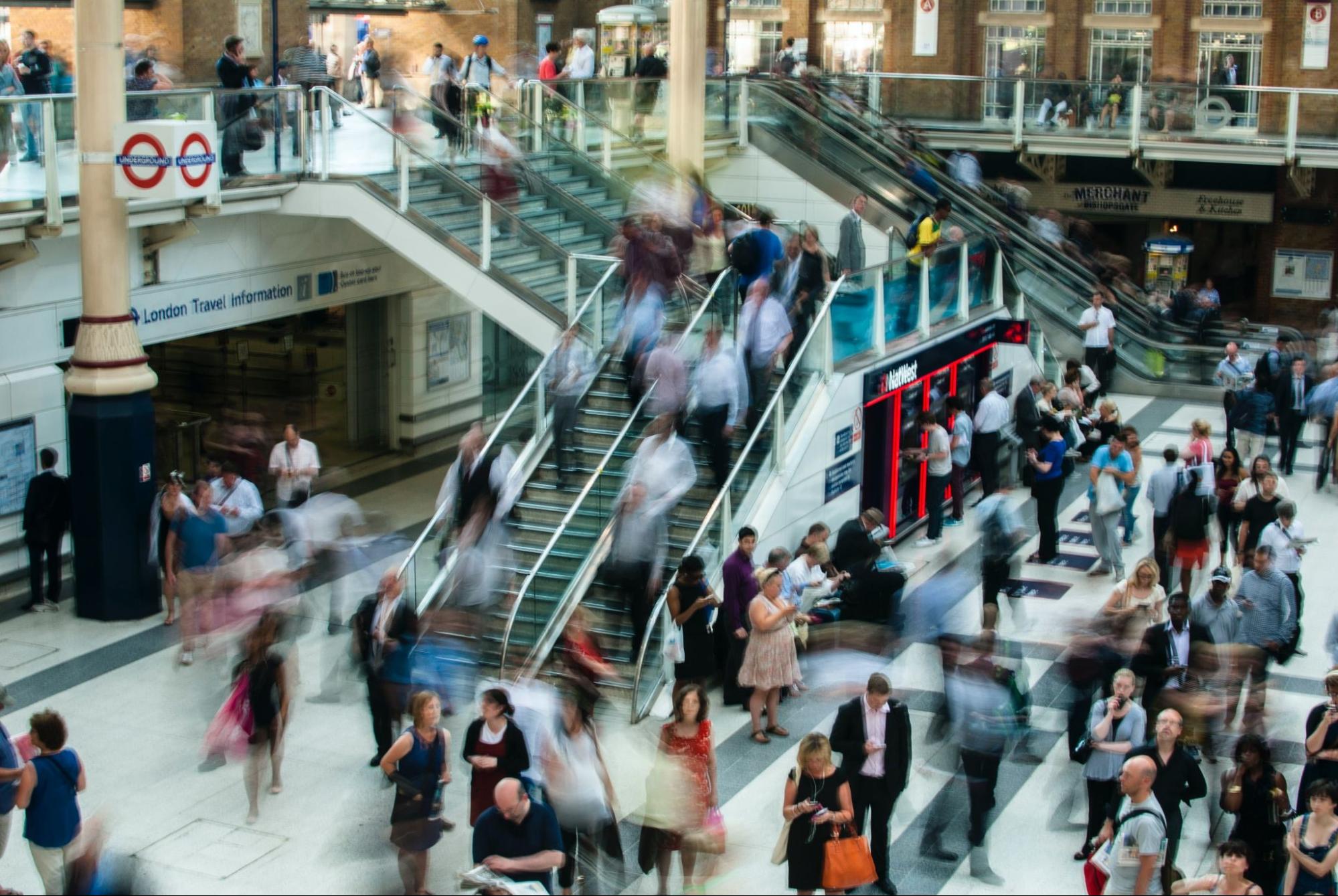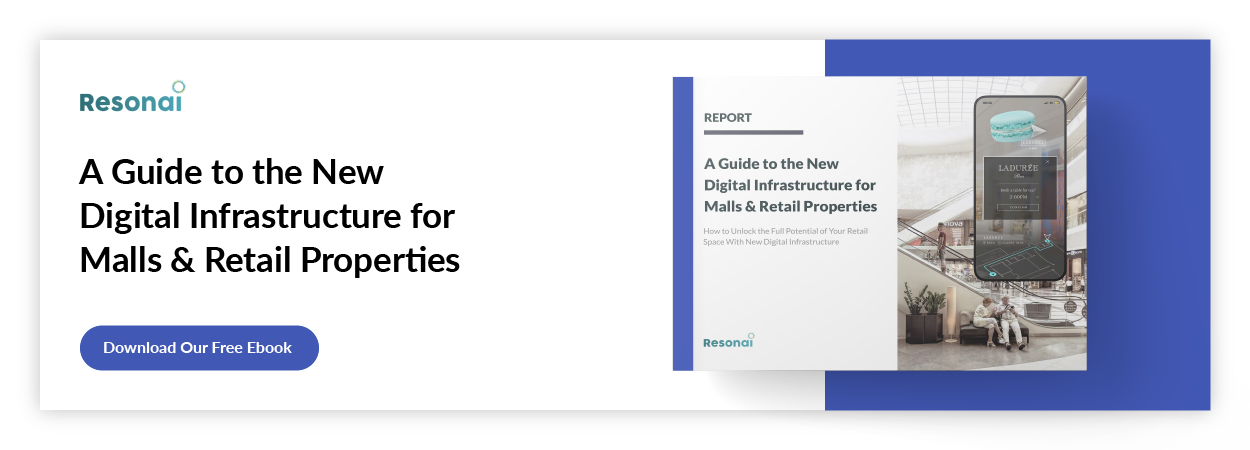Retail Foot Traffic: The Essential Guide
Here’s everything business owners and building managers need to know about retail foot traffic.
 In the ever-shifting retail landscape, maintaining an optimized business strategy requires insight into retail foot traffic trends, knowledge of consumer behaviors, and a keen sense of the unpredictable. Building managers and business owners must make the most of every square foot at their disposal, and continually evaluate whether their existing layouts could be refined to make a real impact on their bottom line.
In the ever-shifting retail landscape, maintaining an optimized business strategy requires insight into retail foot traffic trends, knowledge of consumer behaviors, and a keen sense of the unpredictable. Building managers and business owners must make the most of every square foot at their disposal, and continually evaluate whether their existing layouts could be refined to make a real impact on their bottom line.
Retail foot traffic is one of the primary ways to measure whether certain strategies are effective, but it’s crucial to understand how and why people move through your locations. Here’s a comprehensive view of retailers foot traffic, how it’s changing, and how it’s staying the same.
Jump to a section
Measuring & calculating retail foot traffic
How to analyze retail foot traffic & its value
Foot traffic trends shaping modern commerce
Important retail foot traffic statistics
Fuel costs are affecting retail foot traffic
Brick and mortar sales are outperforming ecommerce
Omnichannel strategies are more important than ever before
How to improve retail foot traffic
To learn more about the future of retail and facilities management, check out our eBook How Smart Buildings Reduce Operating Expenses & Unlock Revenue Opportunities.
Measuring & calculating retail foot traffic
When finding a new location, empirical data about retail foot traffic in and around the location is key to informing your decision-making. Different types of businesses rely on different types of foot traffic to be successful, namely walk-in traffic and destination traffic. Businesses can survey customers to classify traffic, then use sales data to determine the percentages of sales from walk-ins and percentage of sales from destination shoppers.
Keep in mind that specialized stores like phone repair shops will see more destination traffic than businesses serving day-to-day needs, such as clothing stores. Additionally, high-traffic locations will typically have higher rent, cutting deeper into your bottom line. Business owners should perform a cost-benefit analysis to determine where to set up shop. Here’s a handy formula that can help make an informed comparison between two locations:
- Location A Foot Traffic/Location B Foot Traffic = X
- Walk-in Traffic Sales Percentage * X = Increase
- Increase * 100 = Percent Increase
Assuming location A gets 10,000 visitors a day and Location B gets 5,000, here’s how the math works for a store that gets 90% of its sales from walk-ins:
- 10,000/5,000 = 2
- 90% * 2 = 1.8
- 1.8 * 100 = 180%
Here’s the math for a store that gets 10% of its sales from walk-ins:
- 10,000/5,000 = 2
- 10% * 2 = 0.2
- 0.2 * 100 = 20%
For more information, check out our post “How to Measure & Calculate Foot Traffic.”
How to analyze retail foot traffic & its value
Once you have an understanding of the retail foot traffic at a business or building location, the next step is to analyze it to determine its value, where it can be improved, and the refinements you can make to tighten your business strategy. Generally speaking, a 20-40% conversion rate is healthy in retail environments, though that does depend on the product categories you sell.
You’ll also want to know your peak business hours, which will help determine how many employees to have on-floor. Their role is becoming more important, with a recent report from CBRE indicating that the retail experience of the future will be “high tech fitting rooms” that are vital for “branding purposes and essential customer interaction.” Customer interaction is a vital piece of the puzzle — repeat customers create sustainable retail foot traffic.
Retail store foot traffic should also inform your product flow and maintenance routine. High traffic areas will need more upkeep, whether that’s cleaning or managing interactive signage. Additionally, high traffic areas can inform product flow. High-margin products placed where people are most likely to grab them will help drive results even when no employees are available to help.
Read our blog post “How to Analyze Retail Foot Traffic & Its Value” for more information.
Foot traffic trends shaping modern commerce
The coronavirus pandemic has disrupted modern commerce, lowering retail foot traffic and causing supply chain issues. However, the industry is starting to recover. Nearly half of consumers prefer shopping in-store compared to online, and 82% are more likely to return if they have a positive in-store experience. In fact, only 15% of consumers are pleased with the online shopping experience.
For more about how modern commerce is changing, check out these 4 retail foot traffic trends shaping modern commerce.
Important retail foot traffic statistics
The retail industry is in a constant state of flux, though current trends and statistics offer a clear view of how healthy the market is overall.
Fuel costs are affecting retail foot traffic
- In October, consumers had an optimistic outlook, with 44% believing that the economy will recover within 2-3 months, according to a December 2021 survey.
- In recent months there has been some pessimism, with 32% of consumers believing that their financial positions will worsen in the coming year.
- Consumers are curbing spending amid rising fuel and grocery costs. The week of March 7, 2022, saw a 4.3% decrease in foot traffic across retailers compared to the same period three years ago.
Brick and mortar sales are outperforming ecommerce
- January 2022 foot traffic was down 7.7% compared to January 2019 but saw improvement compared to peak pandemic levels.
- Ecommerce penetration was 19.1% in 2021. Consumers are spending most of their money at brick and mortar stores, despite ecommerce sales increases.
- Shopping center traffic still hasn’t recovered to 2019 levels but saw a 32.2% rise from 2020 to 2021.
Omnichannel strategies are more important than ever before
- Strong omnichannel strategies help companies retain an average of 89% of customers, versus a 33% retention rate at companies with weak omnichannel strategies.
- Retail returns have grown alongside ecommerce, as more clothes, shoes, and other purchases make their way to exchange desks. Retailers can now expect 16.6% of merchandise to come back, an increase from 10.6% in 2020.
- 46% of consumers intend to spend more time in the metaverse in the future.
- 80% of consumers are more likely to purchase something if they have a personalized shopping experience, which omnichannel methods provide in-store.
For more of the numbers driving business today, read the big list of retail statistics and the big list of post-pandemic mall foot traffic statistics.
How to improve retail foot traffic
There are countless ways to bring more customers to your store, and as those omnichannel stats prove, it's better to think of an entire building as a digital asset as well as a physical one. This approach is aided by innovative platforms, which are ushering in a new type of hybrid digital retail by equipping facilities with solutions that improve the customer experience.
Resonai’s Vera platform has been crafted for that purpose, leveraging augmented reality to transform traditional retail into a personalized, adaptable experience for every customer that walks through your doors. Are you ready to learn more? Get in touch with Resonai today and set up a free demonstration.
Subscribe to Our Newsletter!
Read More
The Big List of Retail Foot Traffic Statistics
Retail is in a bit of a flux right now, shifting and changing in ways that are difficult for...
4 Retail Foot Traffic Trends Shaping Modern Commerce
Recent developments in retail foot traffic trends prove that, while there was a lull due to the...
6 Ways to Improve Retail Customer Traffic
There are few things more frustrating in retail than an empty store. Low customer traffic is a...
